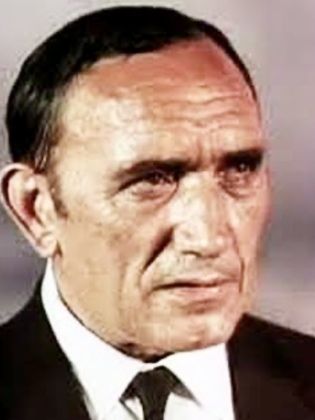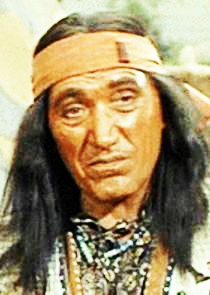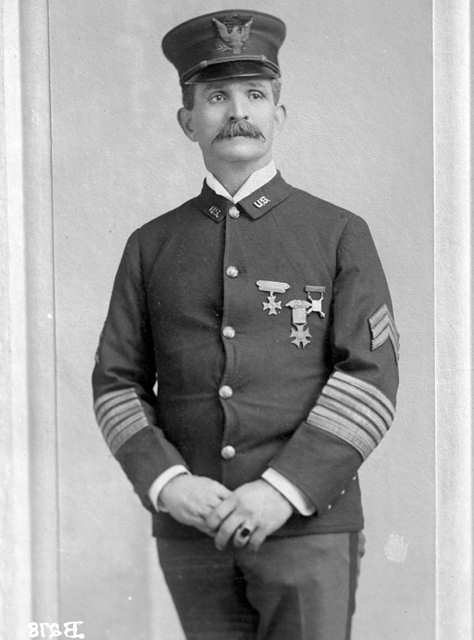
Italian tribe
Before it was condemned as ‘cultural appropriation” non-White movie roles were played by Euro-Americans. For Indigenous Americans one of the most egregious appropriations was Chief Iron Eyes Cody, the iconic face of the environmental movement in the 1970s.
To his dying days Cody denied being anything but a Native American. With his passing came the truth that his real name was not Cody but de Corti, the Louisiana-born son of Francesca Salpietra and Antonio de Corti. His dad shortened the name to Corti when he moved to Texas and his son Anglicized it to Cody when he went to Hollywood. His indigenous persona was launched as a bit player in a 1925 silent movie. From then on he played Indian characters in 215 movies, becoming ‘Iron Eyes Cody’ in Bob Hope’s 1948 hit Paleface. He eventually went native mentally, claiming various tribal connections – except his actual Italian one. Shortly before reaching the Happy Hunting Grounds his half-sister spilled the fagioli, but he continued to walk in his cinematic moccasins to the end.
Another fake Indian was actor Frank de Kova, born Frank Campanella in New York City. For us Boomers he famously played Chief Wild Eagle of the cowardly Hekawi tribe in the TV series F-Troop, as the Chief often put it: “Hekawis lovers not fighters.” Unlike de Corti, de Kova wasn’t type-cast as an Indian. Actually, he got his start as a Mexican general in Marlon Brando’s Viva Zapata (1952). In 1956, he played a Hebrew nemesis of Moses in the Ten Commandments. His long career spanned both movies and television playing Indians, cowboys, and even mafiosi.


Playing Native Americans in cinema was a lot safer than dealing with them in real life. Explorer Giovanni da Verrazzano not only tangled with Caribbean natives in 1528 but ended up on their barbeque. Then there was the first Italian settler in Dutch New Amsterdam (today’s New York City), Pietro Cesare Alberti. He and his Dutch wife were murdered by Indians while defending their Brooklyn farm in 1655. I suppose Alberti had ‘appropriated’ Indian land rather than just their culture.
Among the tales of Italian survivors of hostile encounters with Indigenous people is the story of John Martin, born Giovanni Martino. This immigrant joined the U.S. Army after the Civil War and was eventually assigned to George Custer’s 7th Cavalry as a bugler. On that fateful day at the Little Big Horn, Custer dispatched Martino to get reinforcements and ammunition. Although he had barely escaped Custer’s last stand, Martino and the returning reinforcements were themselves trapped by Indians on a nearby hill. They fought off repeated attacks for thirty-six hours before being rescued by another U.S. Army column.

Newspaper accounts referred to Martino as a “Custer massacre survivor” and “the last white man to see Custer alive.” Martin continued his army career, serving 30 years including in the Spanish-American War (1898-99). His photo on the right was taken in 1904. Seventh Cavalry records indicate Martin had hazel eyes, dark hair and stood 5’ 6”. In nearly all accounts, he is described as bright and cheerful.
Notwithstanding, I’m sure he stayed clear of Indian Territory in his remaining years.
-JLM




well we now have a new addition to the Italian tribe, a remake of a Gilbert and Sullivan operetta, called The Mikado. It is now deemed politically incorrect and insensitive to the Emporer of Japan, so it has now been renamed and set, in Renaissance Italy, and renamed Il Ducato, and all the key characters have been recast with Italian titles.
It really is not necessary to read the comics anymore thanks to all the gyrations of political correctness going on….and of course, I think Cher was part Native American….how dare she get the part in Moonstruck…..can u imagine….It was and is still a funny movie whoever plays the parts…..the only thing necessary in processing all this stuff is a good sense of humor…
PS I am sure de Corti was not above sampling a cuccidati or two from the famed Italian bakery in New Orleans, called Brocatto’s .